Author: mtank (Page 1 of 4)
BC Curriculum Connections
Grade: Kindergarten
Subject: English Language Arts (K)
Core Competencies: Communicating
Big Idea: Through listening and speaking, we connect with others and share our world.
Curricular Competencies: Exchange ideas and perspectives to build shared understanding.
Content: Strategies and processes: oral language strategies.
————————————————————————————————–
Subject: Mathematics (K)
Core Competencies: Critical Thinking and Reflective Thinking
Big Idea: One-to-one correspondence and a sense of 5 and 10 are essential for fluency with numbers.
Curricular Competencies: Develop, demonstrate, and apply mathematical understanding through play, inquiry, and problem solving
Content: Number concepts to 10 and direct comparative measurement.
Lesson / Activities
*Note: This literacy lesson was extremely short as the teachers’ main focus in the morning was math. I did not take any photos as students were participating in the show and tell activity.
Soft start: The teacher mentioned that she usually has a message on the board for the students to read but missed it for this day. She also takes attendance by having the students come up to the whiteboard when they arrive at the start of the day. They read and answer a “yes” or “no” question by placing their name tag under their chosen answer. The question usually starts with the letter they are learning. Today’s question was “Do you like watermelons?”
Show and tell: Each week, the class has show and tell time. About five students participate each day, and their objects must start with the letter they are learning. This week, the focus was on the letter “W”. The students who are presenting must give three different clues (e.g., my object holds money, my object can fit into a purse and it is leather) then students with raised hands get a chance to guess (wallet). After the class has guessed the right answer, the presenter gets to choose three people to ask them a question about their object – the questions must relate to the show and tell.
This activity, as I observed today, fosters wonder, creativity, and communication. The students enjoyed it, and I believe it’s a great way to build a classroom community. Students get to share something special to them, allowing others to make connections and share common interests.
*I wanted to share the math activities I observed and participated in as math was the main focus for our visit.
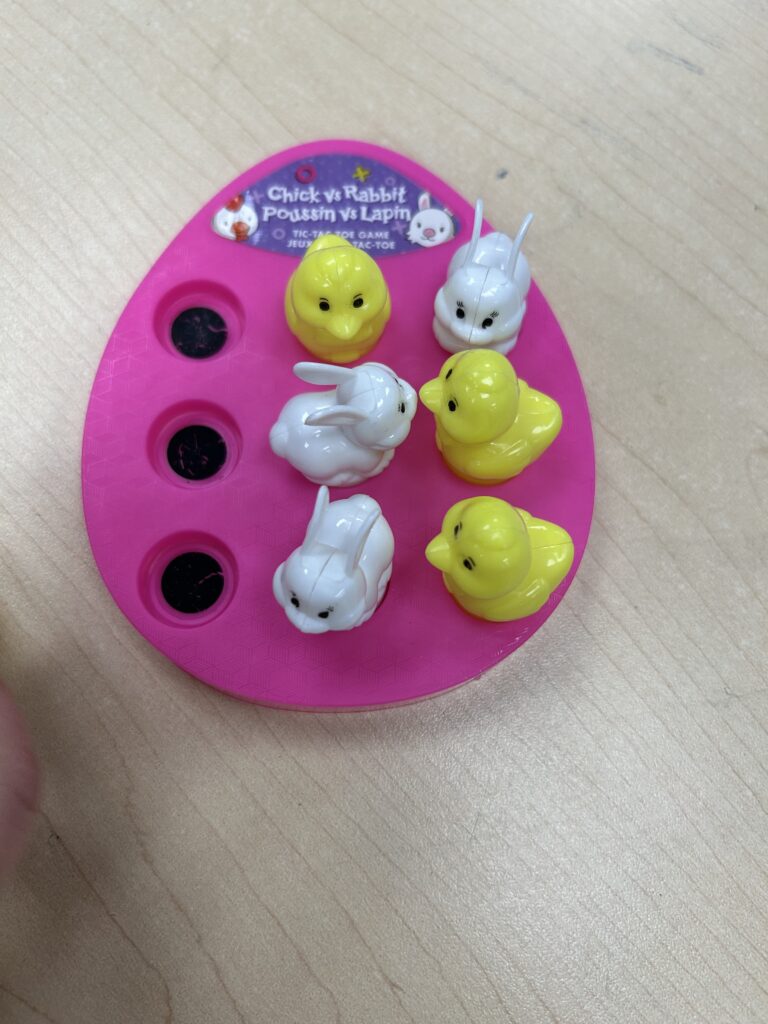

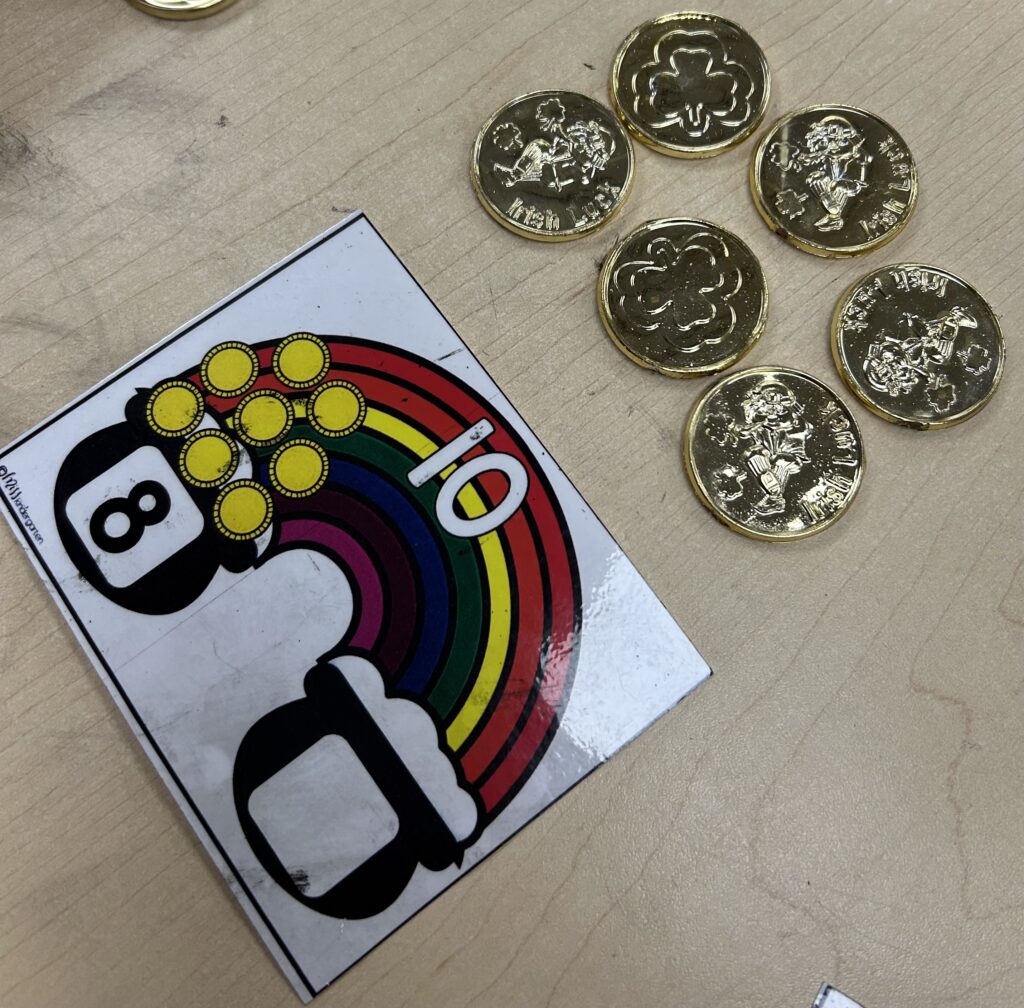
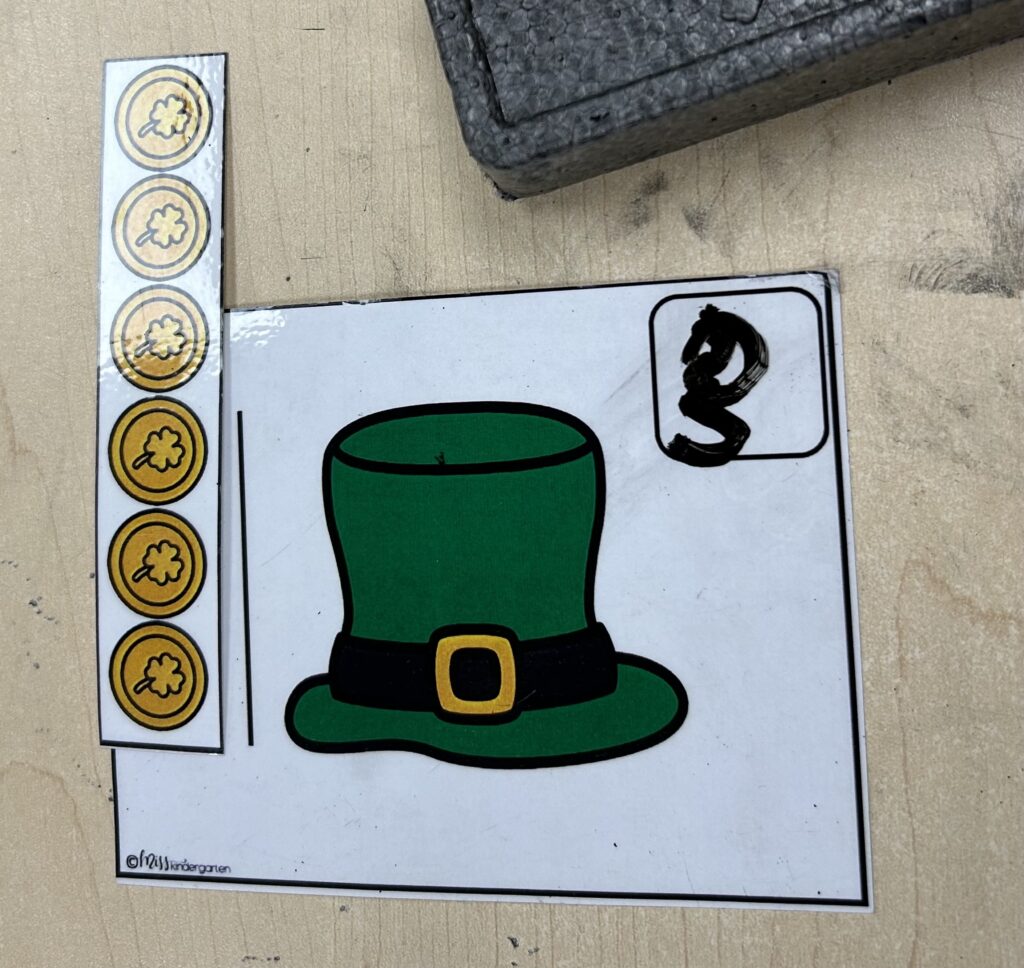
Personal Reflection:
I am grateful that I got to spend my last visit in the Kindergarten classroom! My practicum is in a Kindergarten class this year, so I found this last visit extra special as I got to see how another Kindergarten classroom runs, examples of different transitions, as well as some helpful resources and activities. I enjoyed how the classroom teacher got us to work with a small group of students during math centers, as it gave me the chance to see how she implements new activities and organizes student-led activities. All in all, I believe this visit was a great learning opportunity for me. I took away a lot of useful strategies, tips, and resources that I can hopefully implement in my practicum class as well as in my future classrooms!

When I was younger I always loved reading or having someone read to me any of Dr. Seuss or Robert Munsch’s books! They are such fun books and the pictures are so detailed and complement the literature so well. Although, these are fun books that I remember from my childhood, I do not think they are the ones that changed everything for me. The book that did change everything for me is called Greenlights by Matthew McConaughey. This book is a perfect mix of his life (memoir) / life experiences, self-help and just an overall interesting story of his life starting from childhood.
I am a big fan of Matthew McConaughey and his acting, so when I heard he was releasing his book I was intrigued and thought I would give it a read. I read the whole book in two days during covid and it was one of the best books I have ever read! It was funny, sad, and most importantly eye-opening. His life is definitely worth writing about and he journaled about it constantly, and in him doing that he came out with some of the best advice and inspiration. He has a passion for life and did a great job of sharing that with the world, and through his book he urges others to take the greenlights (opportunities) just like he did! The book inspired me to want to do more in life, keep fighting for what I want, chase my dreams and to not care what others think. So, if you want to get inspired and learn more about greenlights, I highly recommend giving it a read!
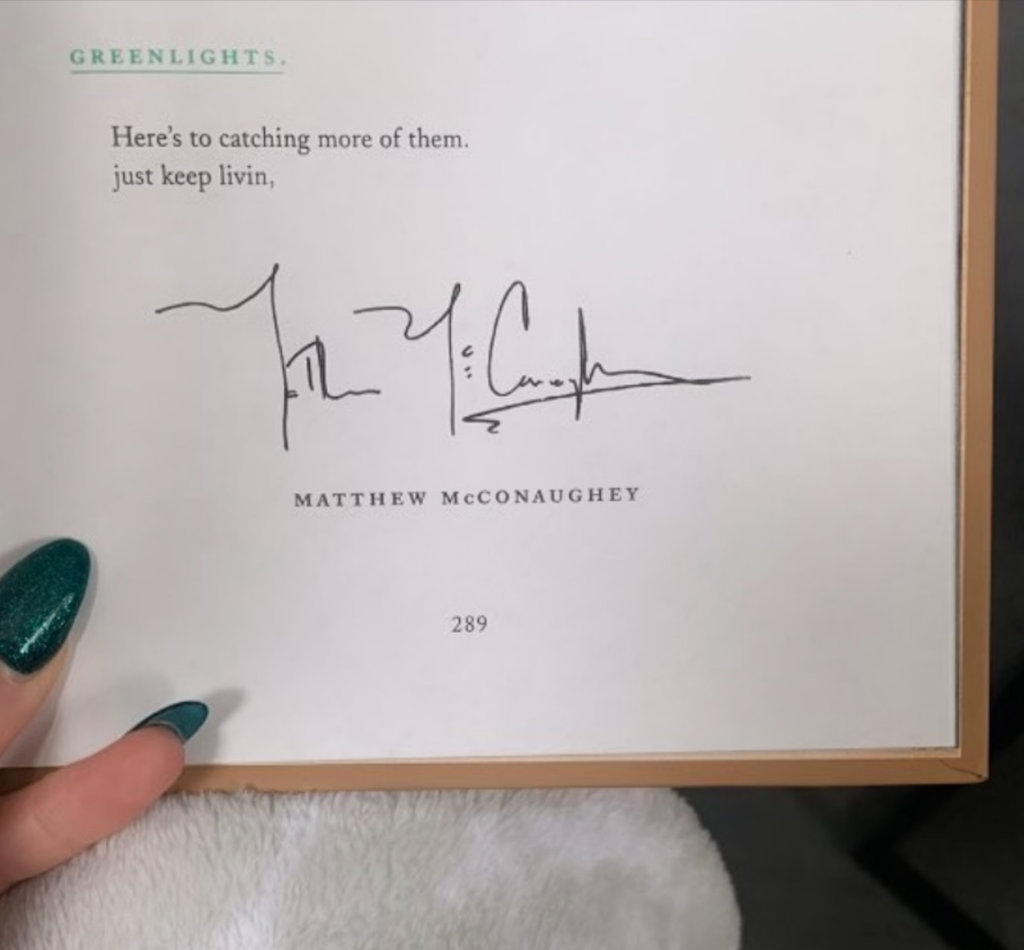
Literacy Assessment Tool: Student Reflections
I absolutely love the idea of using student reflections as a summative assessment tool, as they allow the teacher to look at the students individual understanding and learning of the content in a concrete way. I also believe this tool is a great way for teachers to reflect on their own teaching, as the work serves as evidence, did the students understand the lesson, or did they not? And you can use this feedback to completely alter the unit for the next time you teach it, or to understand what to focus on for the upcoming unit.
*Canva has so many awesome templates for student self-assessment that you can use, make your own and alter to best suit your students and the content you are teaching! I highly recommend checking it out – here are some fun templates I found!
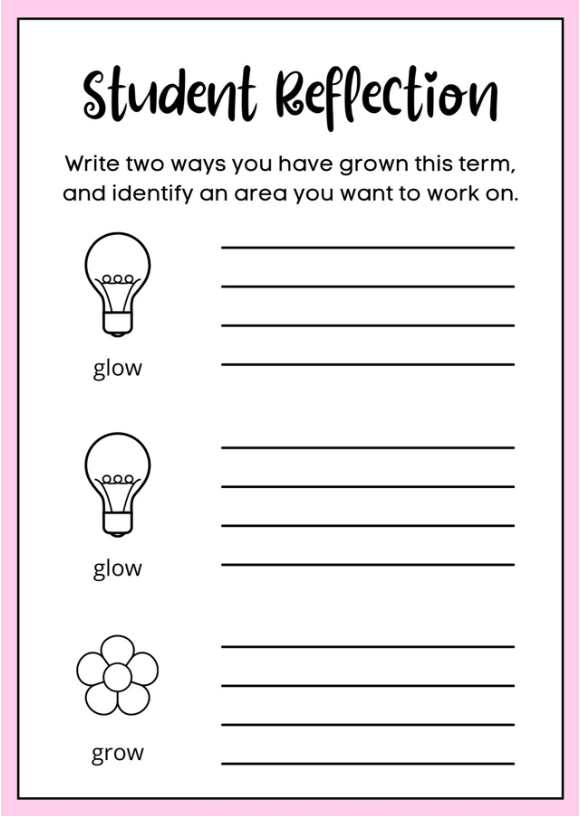
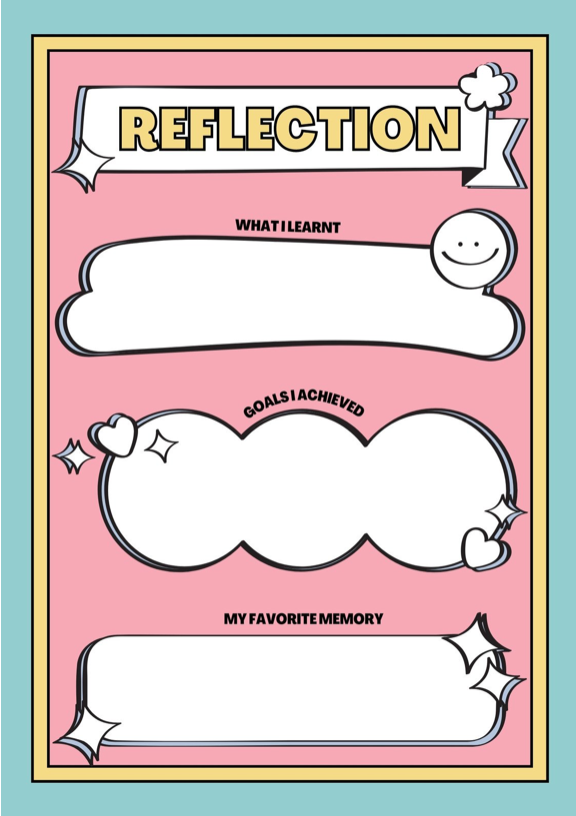
What is a student reflection?
From what I understand, a student reflection assessment tool is an activity or method to help students reflect on their own personal learning. It can be either formative or summative, meaning it can be integrated into a lesson at any point to track students learning (formative) or used as a final piece of evidence for students learning (summative.) The assessment tool can also be very open and altered for any grade, which is one of the reasons I love it so much! You can ask as many questions as you feel is appropriate and construct those questions however you may like (some helpful example questions), but making sure they connect to the overall unit and goal you have set out for the students. Some example questions if you have just finished a literacy book unit could be, “what is the message of the story? what character do you connect to most and why? etc.” The main goal of the assessment tool is to make sure you are encouraging students to think critically about what they have learnt throughout the unit and are going to reach the intended goal you have set out for them (which could be linked to the Grade 3 English Language Arts Big Idea “stories and other texts help us learn about ourselves, our families, and our communities.”)
The reasons I would use student reflections as an assessment tool…
The reason I would integrate student reflections into my lessons and use them as an assessment tool is because I think they really show students understanding of the unit and allow them to think critically. I also love that you can alter the questions to best suit the grade level you are teaching or even alter them to best suit your classes needs. This method also links to the Core Competency “Thinking – Critical and Reflective Thinking,” especially Profile 3 “I can ask questions and consider options. I can use my observations, experience, and imagination to draw conclusions and make judgments” (BC Curriculum.) I believe that by incorporating student reflections into my teaching practice, I can better support my students learning and growth, while also keeping the questions engaging and relevant to the students.
How I would use student reflections and when I would use them
I would use student reflections as both a formative and summative assessment tool. I would have students do a student reflection nearing the middle of the unit to check their understanding of the unit so far, then again at the end. This allows me as the teacher to see if I need to slow down and go over some content again or carry on as is. It also allows myself and the student to see their progress from the middle of the unit to the end.
I would probably start this assessment tool at the grade level 3 as the English Language Arts curriculum states that by this grade they are focusing on writing processes, legible handwriting, sentence structure, conventions and also communicating using sentences and most conventions of Canadian spelling, grammar, and punctuation (BC Curriculum.) I would then carry this assessment tool on from grade 3 and use it for the following higher grades as I feel all students, in all grade levels would benefit from personal writing reflections. Additionally, for students that may struggle with writing they could still participate in this, as this assessment tool can be done in so many different ways and forms. The students would record themselves answering the questions through audio or video recording or they could draw a picture then describe the picture to you.
Reference
Curriculum. (n.d.-a). https://curriculum.gov.bc.ca/
Student Reporting Policy (BC)
The Student Reporting Policy in BC is an in depth document that contains all the information you need to know about K-12 student reporting, gathering evidence of learning and communicating student learning.
Proficiency scale
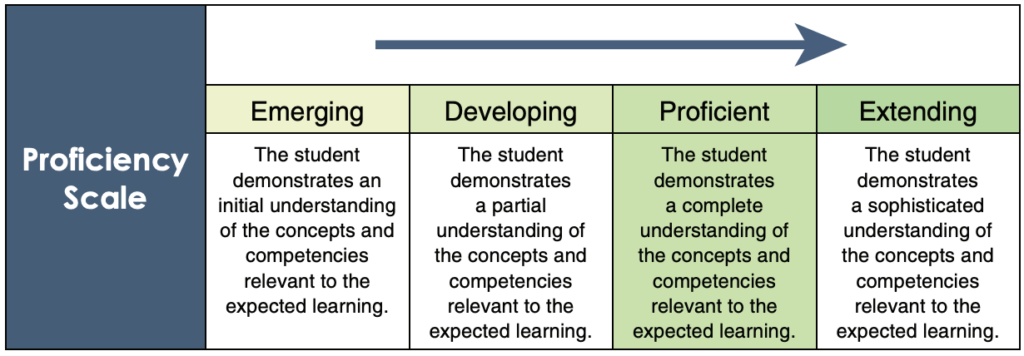
The Proficiency Scale is a four-point scale used to communicate how the student is doing in all subject areas and is used in correlation with evidence of students’ learning, which will highlight why the student is placed in the specific category. The proficiency scale is used in both written Learning Updates as well as the Summary of Learning that is presented at the end of the school year (Unpacking the Proficiency Scale- Support for Educators). This scale is used in grades K-9 and then switches to letter grades and percentages when the students enter grades 10-12.
I really enjoy that this scale focuses on helping and challenging students in their learning journeys. If a student continues to fall under the emerging category it does not mean they are “failing” it just indicates that the student needs more support and/or there is more evidence needed (Unpacking the Proficiency Scale – Support for Educators.) On the other side of the scale, if a student falls under the extending category it does not mean it is the end of the road for them, it means the student is scoring above learning standards and can be challenged to extend their thinking and learning even more. The Student Reporting Policy states that the goal for all students is to reach proficient on the Proficiency Scale!
Frequency of reporting
There are five different sets of reporting for students learning throughout the school year. There are four learning updates, the first two are called “Written Learning Updates” which are reports that are sent out to caregivers and students that contain communication and evidence of students learning in all subject areas and highlight what the students are currently learning (linking to the learning standards – BC Curriculum.) It also provides feedback (student strengths and stretches), information regarding the students attendance and any student self-assessments or reflections. This report uses the proficiency scale and highlights where the student is currently standing on that scale for each subject. The same goes for grades 10-12, the only difference being that they receive letter grades and percentages. Then there are also two informal learning updates, this could be done through open-houses, parent teacher student interviews as well as sharing students learning through online classrooms such as Seesaw.
The last report that is done at the end of the school year is called a “Summary of Learning” which is sent out to the caregivers and students, providing them with an overall summary of the students learning. This report contains all the same information as the other two previous reports, it is just more of an overall summary of the year.
References
K-12 student reporting policy. (n.d.). https://www2.gov.bc.ca/assets/gov/education/administration/kindergarten-to-grade-12/k-12-student-reporting-policy-communicating-student-learning-guidelines.pdf
Unpacking the proficiency scale- support for educators. (n.d.-b). https://www2.gov.bc.ca/assets/gov/education/administration/kindergarten-to-grade-12/unpacking-the-proficency-scale-support-for-educators.pdf
Examples of a student report card comment for English Language Arts:
Context: Below I have constructed a report card comment I would use for a grade 2 student who has scored “proficient” in English Language Arts (2). This report card comment would be part of the “Written Learning Updates” that is sent out twice a year.
“Throughout this term, we focused on playing with language to help students explore its different aspects. Morgan actively participated in our UFLI lessons, demonstrating a strong understanding of fluency and foundational reading skills. With assistance, Morgan is starting to make personal connections to picture books. Moving forward, we’ll continue to work on her understanding of storybooks and texts by asking questions throughout and after the story to spark more critical thinking and communication.
In writing, Morgan demonstrates a proficient understanding of letter formation, sentence structure, and conventions by showing consistency in her writing. I encourage her to add more details to her daily journaling to further develop her storytelling skills. Next term, she will have practice adding details as we create our own stories.”
Context: For our course Reading Instructional Principles and Strategies, a peer and I constructed an English Language Arts report card comment from a scenario we got presented for a student who is developing.
“_____ is developing in term 2 for English Language Arts. _____ continues to gain confidence in our Guided Reading groups and works well and contributes towards the weekly activities that take place in those groups. _______ has been working on spelling lists for short and long vowel sounds. I encourage ______ to continue working on her at-home reading practice and the spelling lists that get sent home on Fridays. For the month of February we had a read-a-thon and I was impressed by Suzy’s courage to read beyond her comfort level. She really gravitates towards animal books. Moving forward I encourage Suzy to practice sounding out words, use her expression when reading and to slow down. I am very proud of how far Suzy has come, and I look forward to seeing her continue to grow in English Language Arts.”
BC Curriculum Connections
Grade: 1-2
Subject: English Language Arts (1-2)
Core Competencies: Communicating – Profile 1: In a safe and supported environment, I respond meaningfully to communication from peers and adults. *During the UFLI lessons I feel like communicating is one of the key elements to students learning throughout the activities. If they feel safe and supported they will continue to excel in their learning and be able to communicate effectively with peers and the adults in the room.
Big Idea: Playing with language helps us discover how language works (1-2), Everyone has a unique story to share (1-2).
Curricular Competencies:
Read fluently at grade level (1), Communicate using letters and words and applying some conventions of Canadian spelling, grammar, and punctuation (1).
Read fluently at grade level (2), Use developmentally appropriate reading, listening, and viewing strategies to make meaning (2).
Content:
Strategies and processes: reading strategies, oral language strategies, and writing processes (1), Language features, and conventions: concepts of print, print awareness, phonemic and phonological awareness, letter formation, sentence structure, and conventions (1).
Strategies and processes: reading strategies, oral language strategies, and writing processes (2), Language features, structures, and conventions: features of oral language, word patterns, word families, letter formation, sentence structure and
conventions (2).
Lesson / Activities
*This list of activities was inspired from a UFLI lesson I observed, how the lesson went & in the order it went. Also, since it is a split grade class the activities rotated between grades. So, when the grade 2’s were doing UFLI with the teacher the grade 1’s were doing there “when I am 100 years old…” activity independently. Then, they switched after the UFLI activity was completed.
Phonemic Awareness: As a whole group (grade 2’s only) the students and teacher did their phonemic awareness drills. The teacher would say the individual sounds and as a group the students would have to notice and identify the individual sounds and say the word (e.g., k-i-n-d = kind.) Then they would segment words into sounds (e.g., kind = k-i-n-d.)
Visual Drill: For this portion of the activity the teacher would go through a slideshow of different vowels and have the students say both the sounds the letter makes (e.g., a sounds like “a” and “ah”.)
Auditory Drill: During this activity students are supplied with a white board, dry erase marker and an eraser. The teacher would say a sound and the students would then have to write the letter (e.g., “ah” and the students would then write the letter A) – this portion of the activity moves quickly.
Blending Drill: The teacher would have a blending board presented on the white board, the teacher would then type different words they were working on and ask the students to decode them and say the word out loud. Then, she would change just one or two letters in the word and have the student decode that word and say it out loud again.
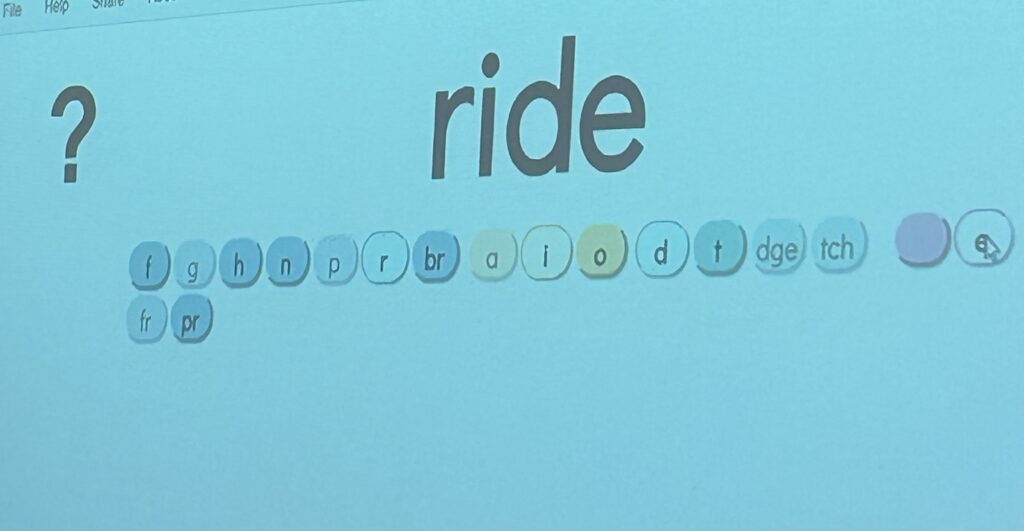
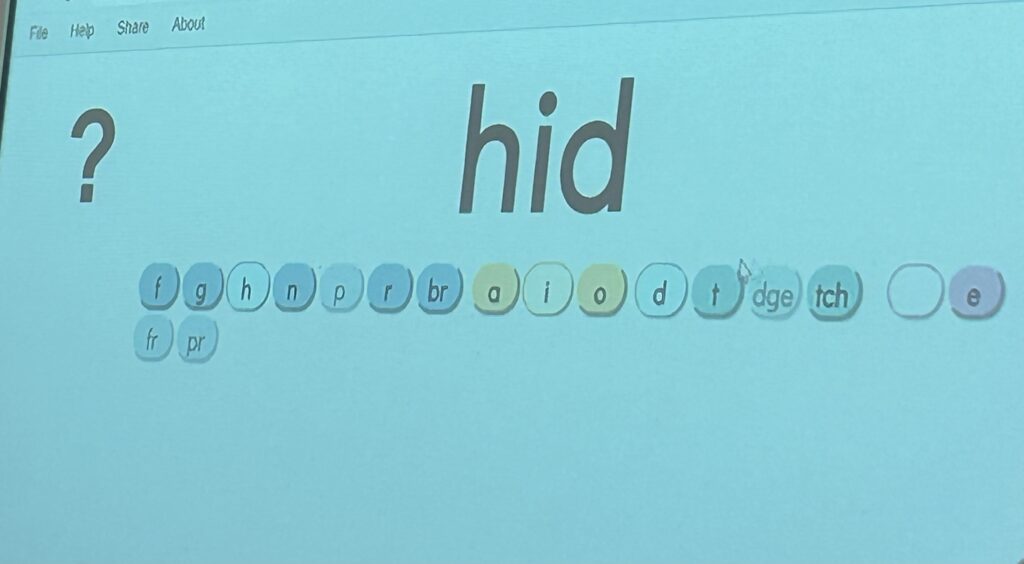
Let’s Read Together: Students then did a whole group read, where they would all read the words presented on the board together. This activity moves quickly and covers the words that they have been learning and using throughout the UFLI lesson.
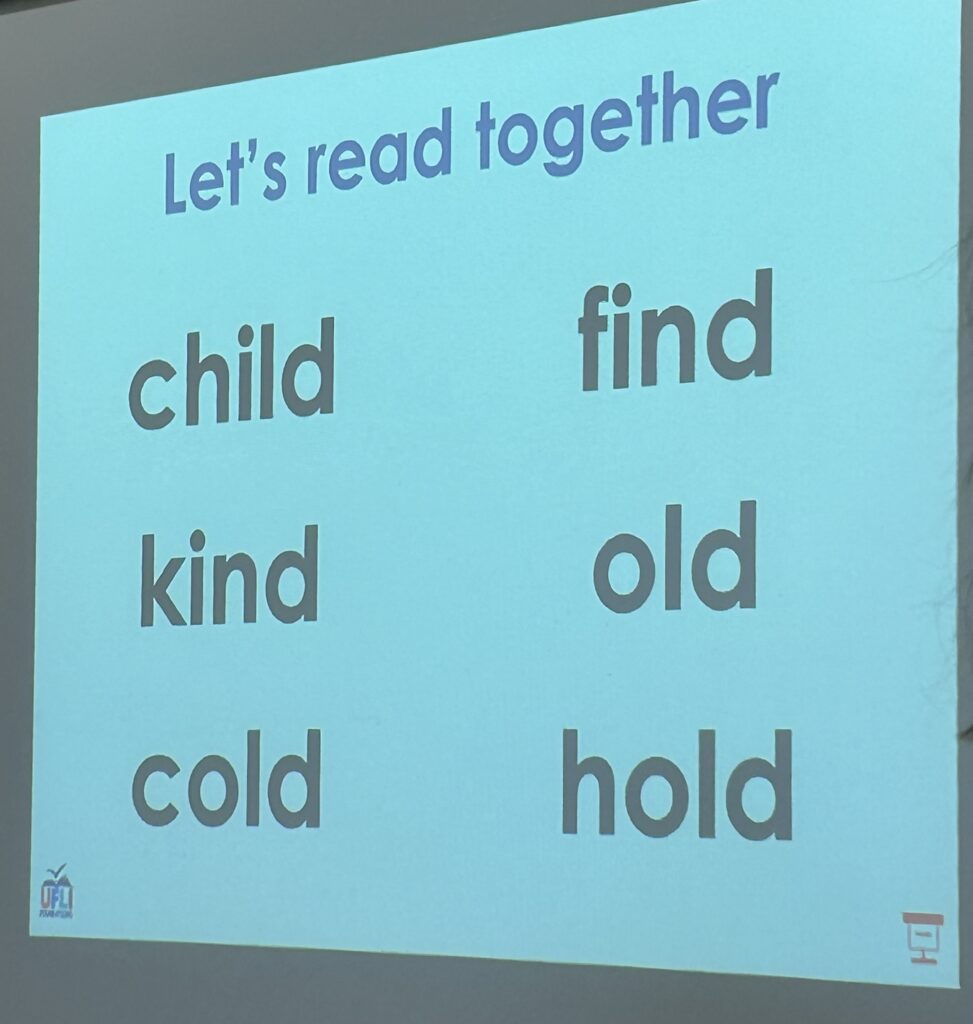
This is where the activity / lesson switches; the grade 2’s move on to their “when I am 100 years old…” activity and the grade 1’s do their UFLI activity which is structured the exact same way but grade 1 level.
“When I am 100 years old…”: At GT, it was the hundredth day, so the teacher had a fun English Language Arts activity planned for the students. First, the teacher walked the students through the worksheet and had them share ideas for each point. I loved this because it sparked conversation between the students and allowed students to start thinking of their own ideas before writing them down. The teacher asked us to walk around and help where needed, instructing us not to help students come up with ideas or tell them how to spell words, but to encourage them to sound out words. The students did great!!!
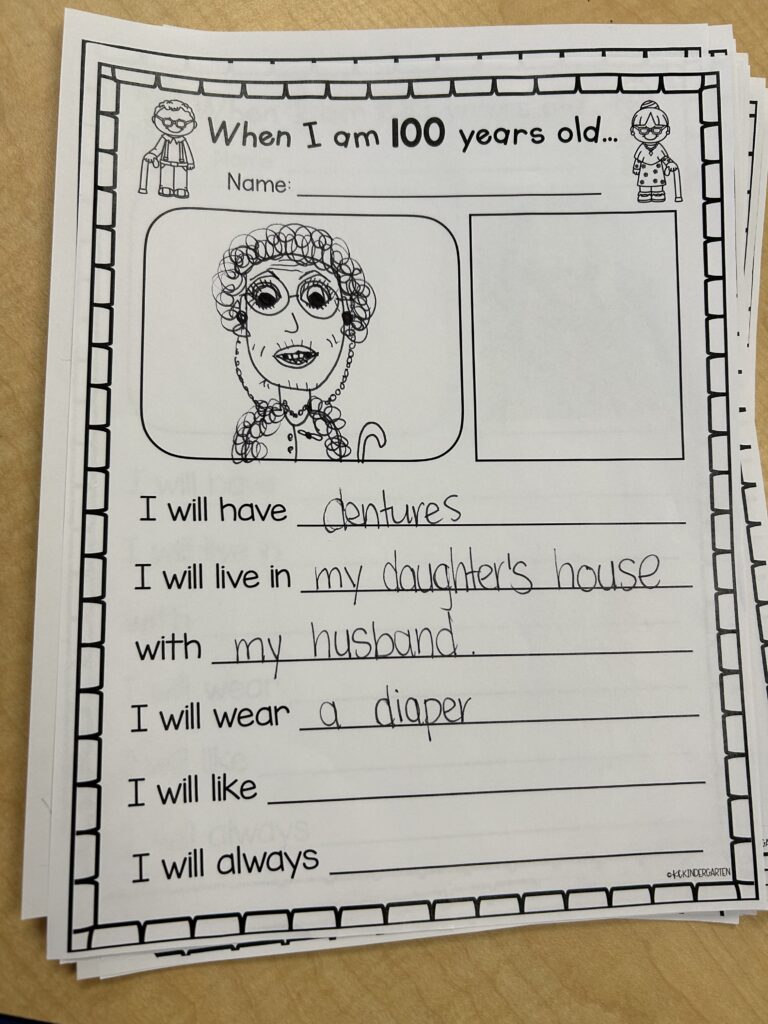

Personal Reflection:
I had a great time in the “ ” classroom! I really enjoyed learning from the classroom teacher. She always made sure to let us know the plan for the day and where we could support. She also shared the resources she used for that days lesson with us and any additional ones she could think of. The teacher encouraged us to be involved in the lessons and work with students who may need extra support, which I appreciated. This opportunity allowed me to see the students’ learning come to life and be there to support them whenever they needed, which I think was great practice. When helping students, I often found myself referring back to the UFLI lessons, making sure that I followed the methods I observed and the way they were learning, which shows I too am learning along side them. All in all, being involved in the classroom and observing teachers in action has been such a great learning opportunity for me. I am thankful for this experience, as I feel I learn the best when being hands on and put into the action.
Story Vines, an old African tradition of storytelling, is a creative way for students (or anyone) to retell a story that they have read or heard. The story is told orally, then retold through a sequence of artifacts representing different parts of the story, created by the reader. The goal of the story vine strategy is to help students develop the following skills
- “develops students’ understanding of story and sequence
- introduces students to new vocabulary
- links visual imagery with reading
- develops fluency in reading and talking” (Bright, 2021, pg. 91)
This strategy fits so well into English Language Arts and Arts Education from the BC Curriculum and can be altered for any grade. For example, for Grade 3 English Language Arts this activity covers the content story/text: elements of story and oral language strategies, the big idea “language and story can be a source of creativity and joy” and curricular competency “recognize the structure and elements of story.” There are many more ways you can connect this activity to the BC Curriculum which is great!
HOW TO: Step by Step
- Choose a book -> make sure to choose one that you love, know well, and that can be used year after year.
- Create a story vine -> use any material that can be braided easily for the “vine.” Make sure your braid is long and wide enough to fit any small artifacts on to it. The artifacts are used to represent different parts of the story and plot. Also, students can create their own artifacts by drawing them or finding images online or in magazines. *Side note: use a hot glue gun to make the artifacts stay in place and last longer.
- Read your chosen story out loud to your students -> be dramatic, use lots of expression, and make sure your reading is fluent.
- Retell the story, using your story vine -> retell the story by using your story vine and make sure to point out your artifacts while you do so. *Remember the story may sound different but the students should be able to make connections to phrases or vocabulary used throughout the original story.
- Have students find a book that they would like to make a story vine with -> recommend students to use a book that they might have already read or know well to support oral fluency. Story boards or having students flag pages in the book that are important or memorable to them allow the planning process of a story vine more manageable.
- Creating the story vine -> as the teacher it may be a good idea to walk the students through a tutorial on how to braid as some may not know how to and may be a new task for them. When it comes to collecting artifacts for the story vine, you could send out a letter home to care givers or ask the students to bring in any craft materials that they may want to use but make sure to supply some as well as glue guns.
- Practice, Practice, Practice! -> give students time to practice their story vines so they can become comfortable and confident in their storytelling abilities. This can be done individually, in small groups etc.
- Share story vines -> have students present their story vines. This can be done as a presentation to the whole class, in small groups or to the teacher. (Bright, 2021, pg. 91-92)
Reference: Bright, Robin. (2021). Sometimes Reading is Hard : Using decoding, vocabulary, and comprehension strategies to inspire fluent, passionate, lifelong readers. Pembroke Publishers.
My very own STORY VINE
I had so much fun creating my very own story vine. It was my first time hearing about this type of storytelling, and I love it! I think it is such a fun and unique way to tell a story. My story vine was inspired by the book The Paper Bag Princess by Robert Munsch.
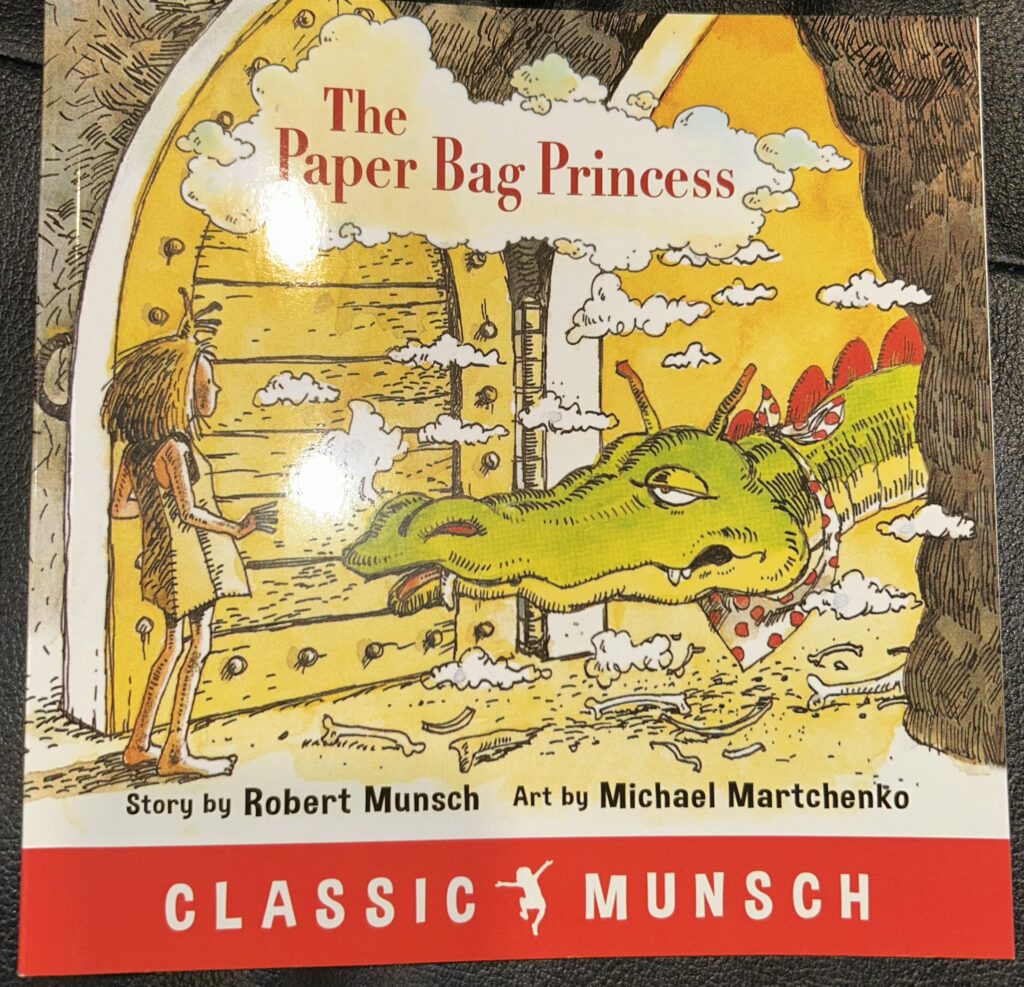
Below I have attached pictures of my story vine, and a description of each artifact and how it ties into the story.
How my vine story was made: I first read through the story and noted the parts I thought were important and made sure to write them down so I could refer to them later. I then started to create my vine, which I made out of braided yarn. I grabbed a long piece of yarn and folded it repeatedly until desired length. I cut the “loops” that were created by folding the yard and made sure the bottom had all long strings, no looped strings. After, I tied the top into a loop and began braiding until the vine was complete, then tied off the bottom so the braid would not unravel. Once my vine was complete I started collecting artifacts (supplied by my teacher – very kind of her.) I made sure my artifacts aligned with the important parts I picked out, so when I read my story vine I can understand exactly the part in the story I am trying to tell. Lastly, I glued the artifacts on using a glue gun and my story vine was complete!
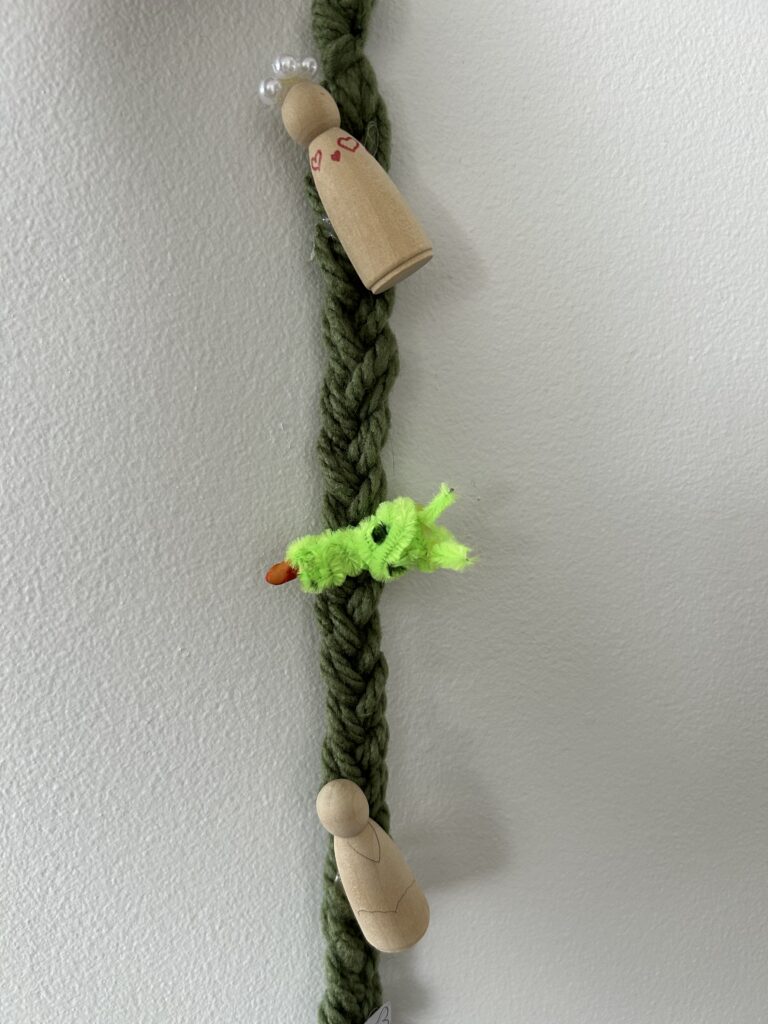
Walking you through my story vine…
Artifact #1 (wooden girl): Princess Elizabeth all dressed up and being head over heals for Prince Ronald.
Artifact #2 (pipe-cleaner dragon): The dragon breaks into the castle and burns all of Princess Elizabeths clothes and steals Prince Ronald.
Artifact #3 (wooden girl): Princess Elizabeth has to dress in a paper bag as it is the only thing she could find that was not burnt.
Artifact #4 (bones): The bones represent the journey Princess Elizabeth took to find the dragon that burnt all her clothes, he left a trail of them behind.
Artifact #5 (fire): Princess Elizabeth tricked the dragon to tire him out so she could sneak into the dragons cave. She bet that he couldn’t burn up ten forests… well he did that and more, fifty forests. By the end he was out of fire…
Artifact #6 (world): Princess Elizabeth tricked the dragon again, by making him fly around the world as fast as he could to tire him out again.
Artifact #7 (zzZ): The dragon fell asleep from all the activities he got tricked into doing… this allowed Princess Elizabeth to sneak into the cave that was initially guarded by the dragon to go and find Princess Ronald.
Artifact #8 (grumpy Prince Ronald): Ronald being appalled by how Princess Elizabeth looks, her hair all tangled, smelling of ashes. He sends her away and asks her to return when she looks like a “real” princess.
Artifact #9 (clay that is engraved with the word “joy” and a clay heart): Princess Elizabeth told Prince Ronald he was a “bum”… and ran into the sunset with such JOY!
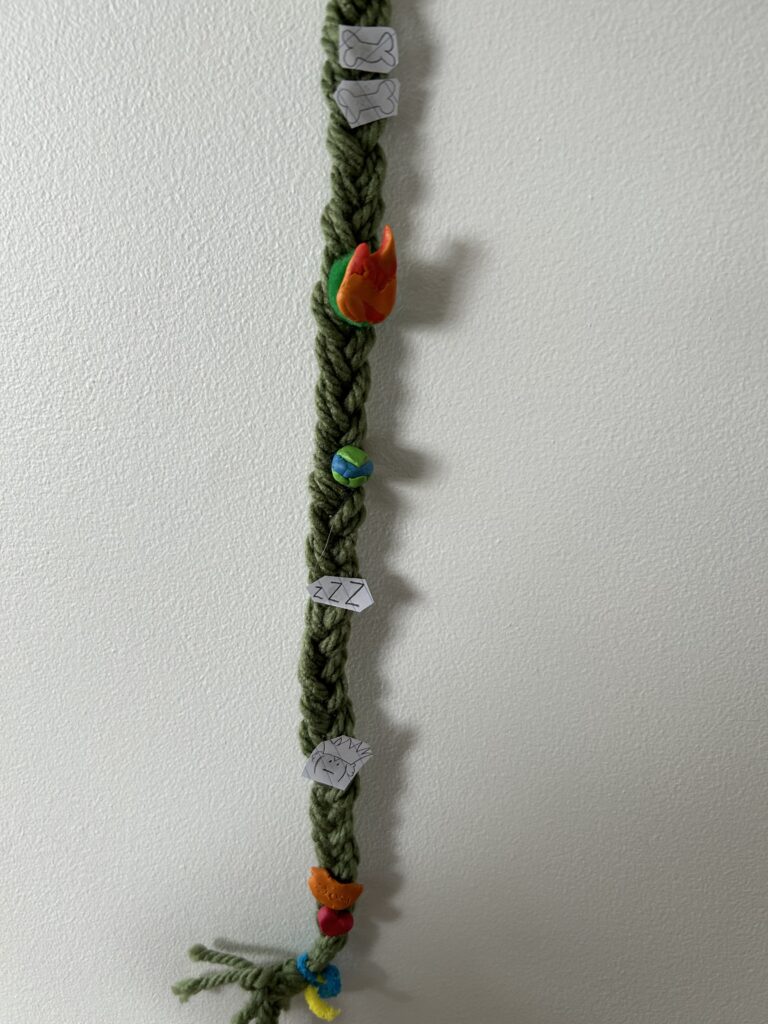
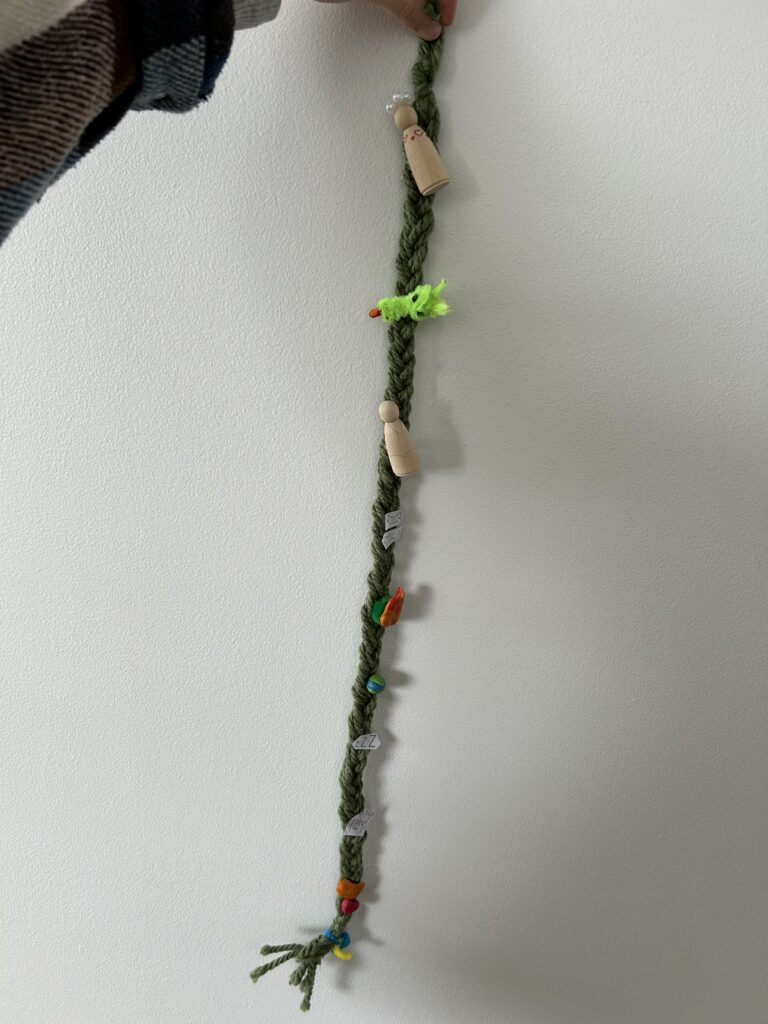
My story vine as a whole!
I cannot wait to bring this idea into my future classroom!
I have attached below a helpful video created by the founder of Magic School. He walks you through the ins and outs of the AI tool. I hope you find it helpful!
I decided to explore the Al tool called Magic School, which was created by educators, to help benefit educators. I have played around on this tool quite a bit since hearing about it, there are some things I really love and some things I question. Starting with the things thing I am questioning… I personally do not like the options where it can help you create a thank you letter or an email to families / caregivers. I think it takes the personal, meaningful aspect out of those things that should be personal and meaningful. I think these types of things should come from the heart, but that is just my opinion. So, I will not be using these options.
Now let’s get talking about all the things I love about this tool. I love that this tool can help me generate ideas or at least point me in the right direction to build a unit plan. As a new future teacher it is extremely intimidating having to create a unit plan from scratch and constantly making sure you are hitting all the important parts of the BC Curriculum (big ideas, content, curricular competencies and core competencies). So, I am happy and thankful that there is a tool that can help support us and help prevent burnout by guiding us and giving us ideas that might take awhile to generate ourselves. But in saying this, I will never just take Magic School’s whole unit plan and run with it – for me it is a tool that can help point me in the right direction and give me ideas. I will always make sure to do my research, to make sure the suggestions / ideas align with the BC Curriculum and they are factual. I will also adapt the unit to best suit my students needs and make sure the unit plan best reflects my teaching style / philosophy. My hope is that once I have gotten a few unit plans under my belt, I will no longer need this tool for unit plan help, unless absolutely necessary.
I also really love how it can share ideas for “ice breaker” activities, help generate report card comments (but make sure you change it to be more personal), generate funny teacher jokes and help build a grading rubric. For the grading rubric I could see myself using it for when I want to create one with my students – once I gather all our ideas I can put our ideas into the rubric generator and it can create us a perfect rubric we are all happy with! Lastly, another great feature is it will generate questions for you based on what you just asked it to do (example below). All of these features are pretty cool and extremely helpful!

This tool has everything a teacher could ever need, and I can see how it can help positively assist teachers in their everyday teaching tasks. I am excited to further develop my understanding of AI tools such as this one and dive deeper into all it has to offer (while being cautious and aware of the negatives as well!)
*Below are some screenshots of different features I have explored throughout the Magic School AI tool
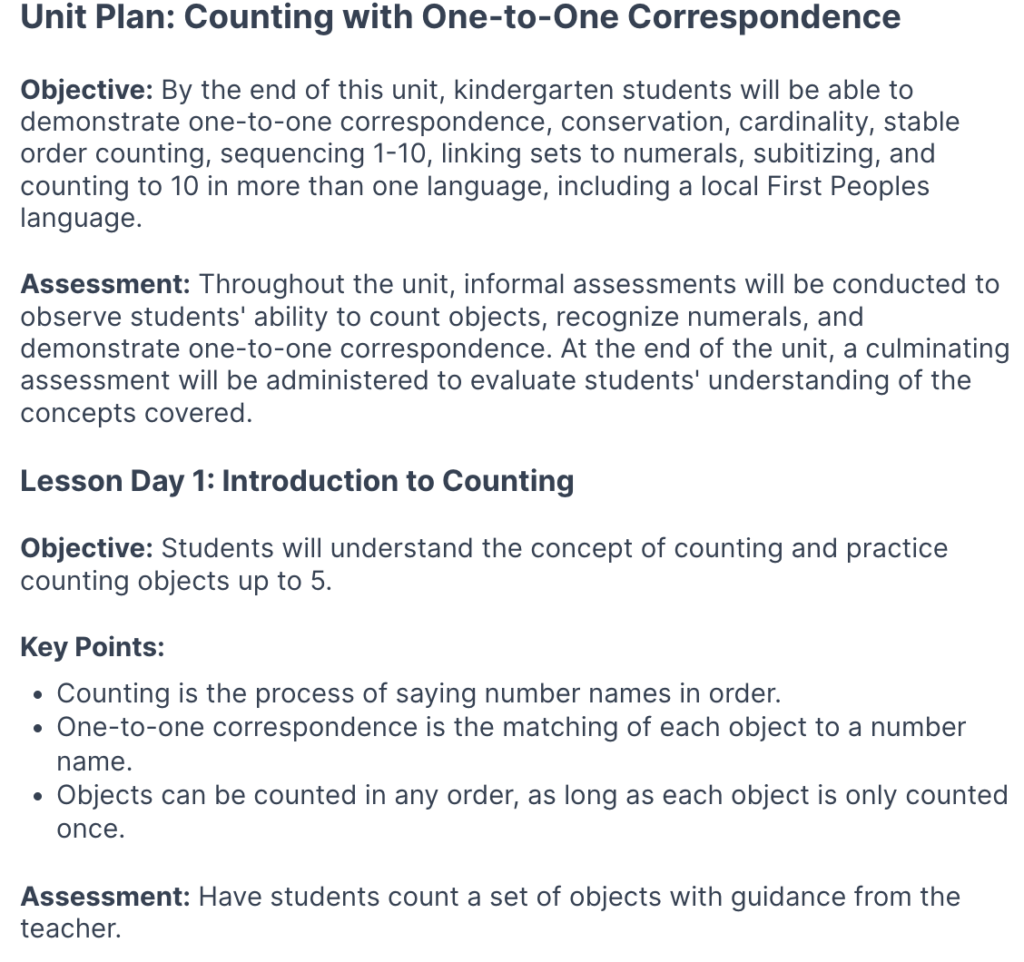
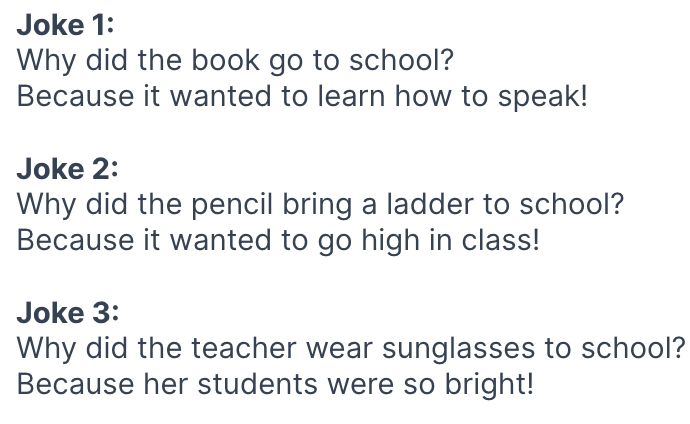
BC Curriculum Connections
Grade: 1
Subject: English Language Arts (1)
Big Idea: Playing with language helps us discover how language works.
Curricular Competencies: Read fluently at grade level, Communicate using letters and words and applying some conventions of Canadian spelling, grammar, and punctuation
Content:
Strategies and processes: reading strategies, oral language strategies, and writing processes.
Language features, structures, and conventions: concepts of print, print awareness, phonemic and phonological awareness, letter formation, sentence structure, and conventions.
Lesson / Activities
*This list of activities was inspired from a UFLI (phonics) lesson I observed, how the lesson went & in the order it went
Sounds + actions: As a whole group students and the teacher did sounds and actions to “th” (fast), “th” (slow) and “ch” – these are the sounds and compounds students are working on.
Word Work: Students began word work at their desks using their blending boards – the teacher asks them to spell out words using their letter blocks and changes only a few letters in the word until the short activity is done (e.g., chat -> chap -> cap -> tap -> tip.) *The teacher has a blending board under the document camera as well so students can refer to it throughout the activity .
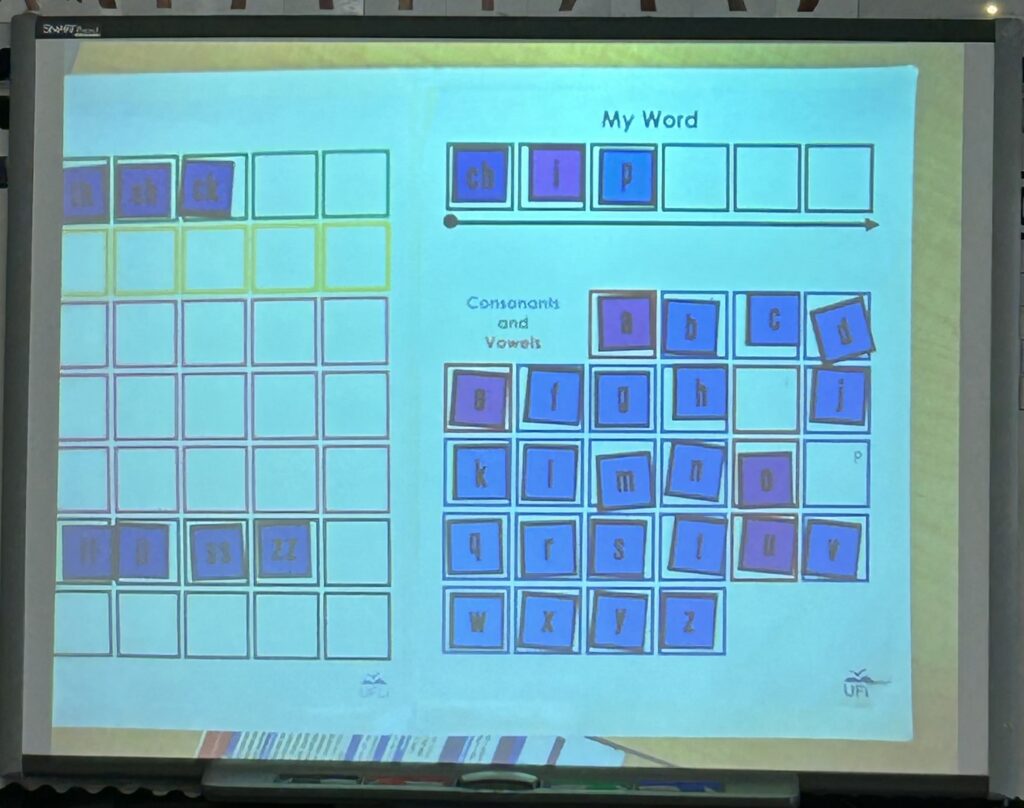
Irregular Words: As a class they went over irregular words on the white board. Irregular words are words that cannot be decoded easily. As a class they said them out loud then, “decoded” the words by saying the “regular” parts of the word which is indicated by the “ ” symbol as well as the parts they need to “learn by heart” which is shown with the “ ” symbol.
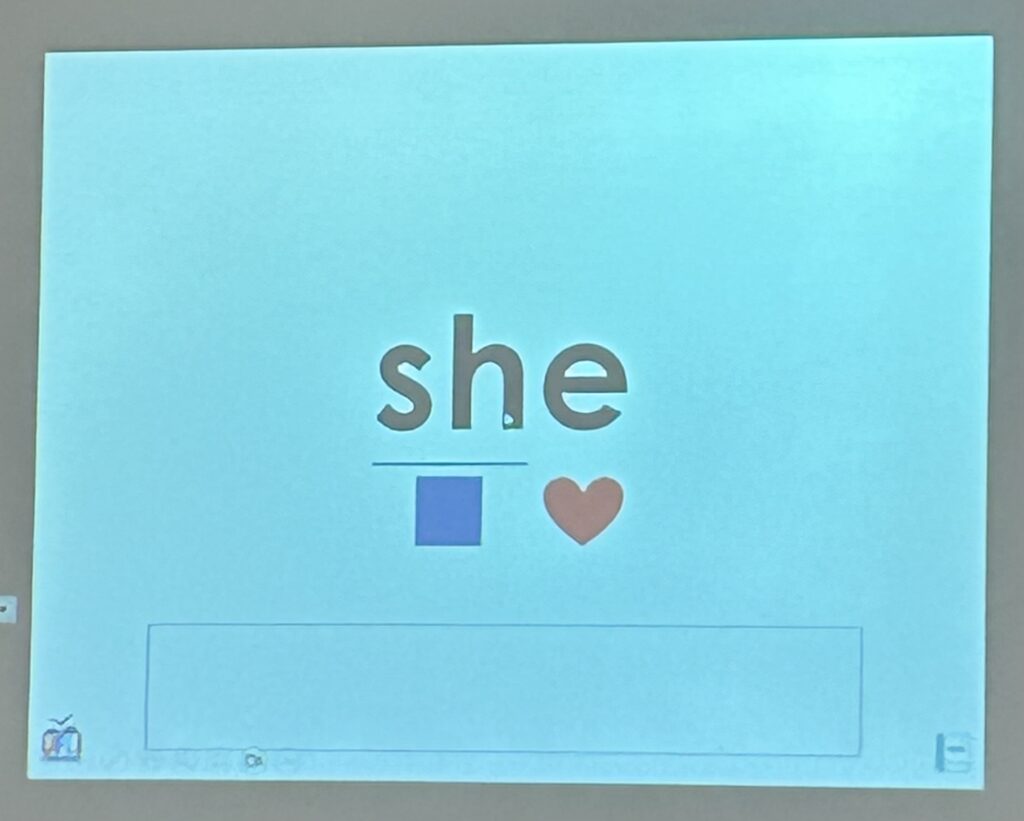
Songs: The teacher also added in songs (not part of the UFLI program) to help students further their understanding of how to say them and spell them properly. The website that was used had great videos that showed the students exactly how it was spelt, actions and catchy tunes to help them remember!
Writing Words: Students got their white boards out and spelt the words the teacher was saying (e.g., “can you spell the word “so”, spell the word “the”, spell the word “you” etc.)
Review of “Schwa” words: The teacher made sure to address the words we say “relaxed” which is called “schwa” – for example in the English language we say “d” like “duh” not just the “d” sound and same with “a” we say it as “ah” not just “a.” So, the teacher made sure to address this so students are learning the proper way of phonics not the “relaxed” way.
Let’s read together: All together the class read out sentences that had words in it that they were focusing on (e.g., Chuck and Beth had lunch.) I like the idea of students having the chance to just read sentences instead of sentences with pictures as I believe it will help them strengthen their understanding of the meaning of the sentence. Additionally, the teacher made sure to go over C.A.P.S for their sentence, “do all the words that need capitals have capitals? is the appearance of the sentence correct? (finger spaces between letters, written left to right etc) does the sentence have proper punctuation? are all the words spelt correctly?“
Let’s spell together: the teacher prompts the students with a sentence and asks them to spell it out, word for word. As the students are writing it out she is also writing it alongside them on the smart board. I really like that the teacher puts circles for the amount of words in the sentence and checks them off as they go. Additionally, they also use the C.A.P.S method to make sure the sentence is a proper sentence.
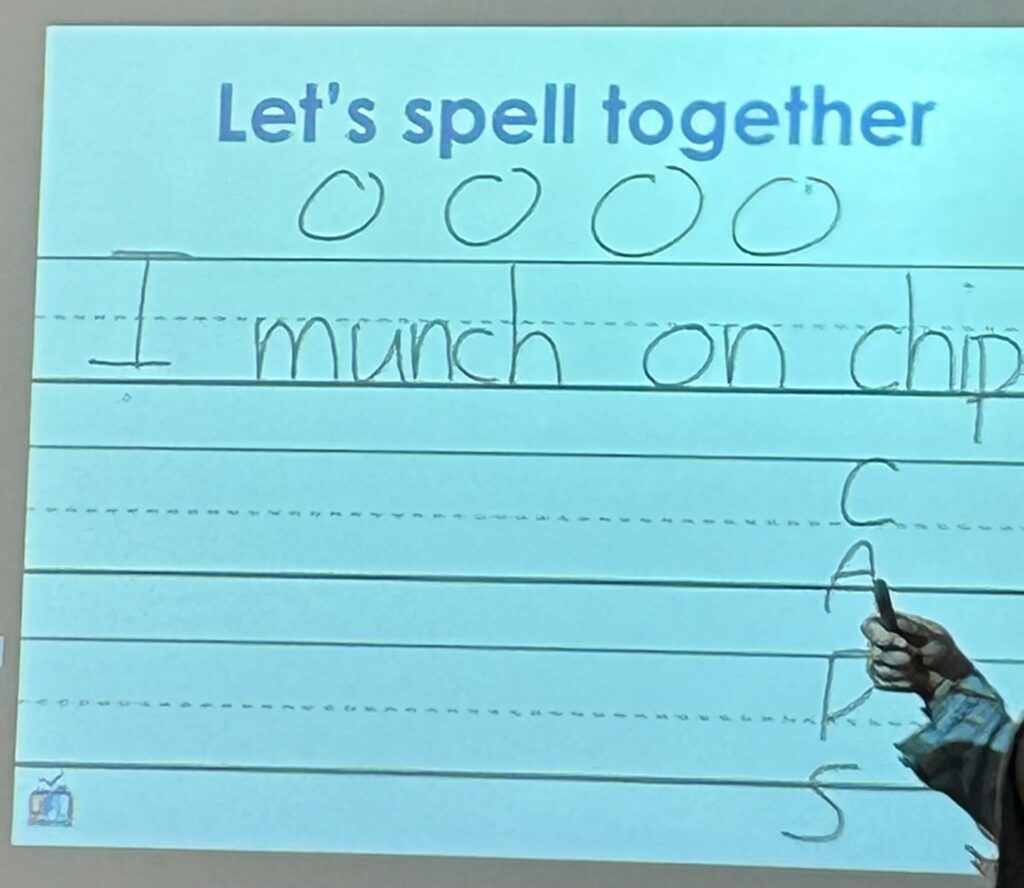
Decodable text / “Rockin’ Reader”: Students come back to the carpet space and read “decodable” texts that are presented on the smart board – after students have read the sentences all together the teacher chooses a “rockin reader” and they get a little slip of paper that says they won “rockin reader” that gets put in their folder then they get to pick a prize, either a sticker or a “desk pet” which is a little eraser.
Student groups / centers: The teacher has preplanned groups (4 groups of 4) based on the students literacy ability, this is done so the teacher can focus on the “lower” levelled groups as often as needed. The students rotate between four different groups; 1 – teacher “lesson,” they focus on phonics and to get additional support if they are struggling with understand the UFLI lessons, they also work in their “UFLI Check In Booklet” (photo presented below) 2 – phonics game, 3 – another game related to the content, and 4 – either levelled reading or another game related to literacy. The students rotate between all of the centers so they each get a chance to participate at each of them. The centers usually last about 5-8ish minutes.
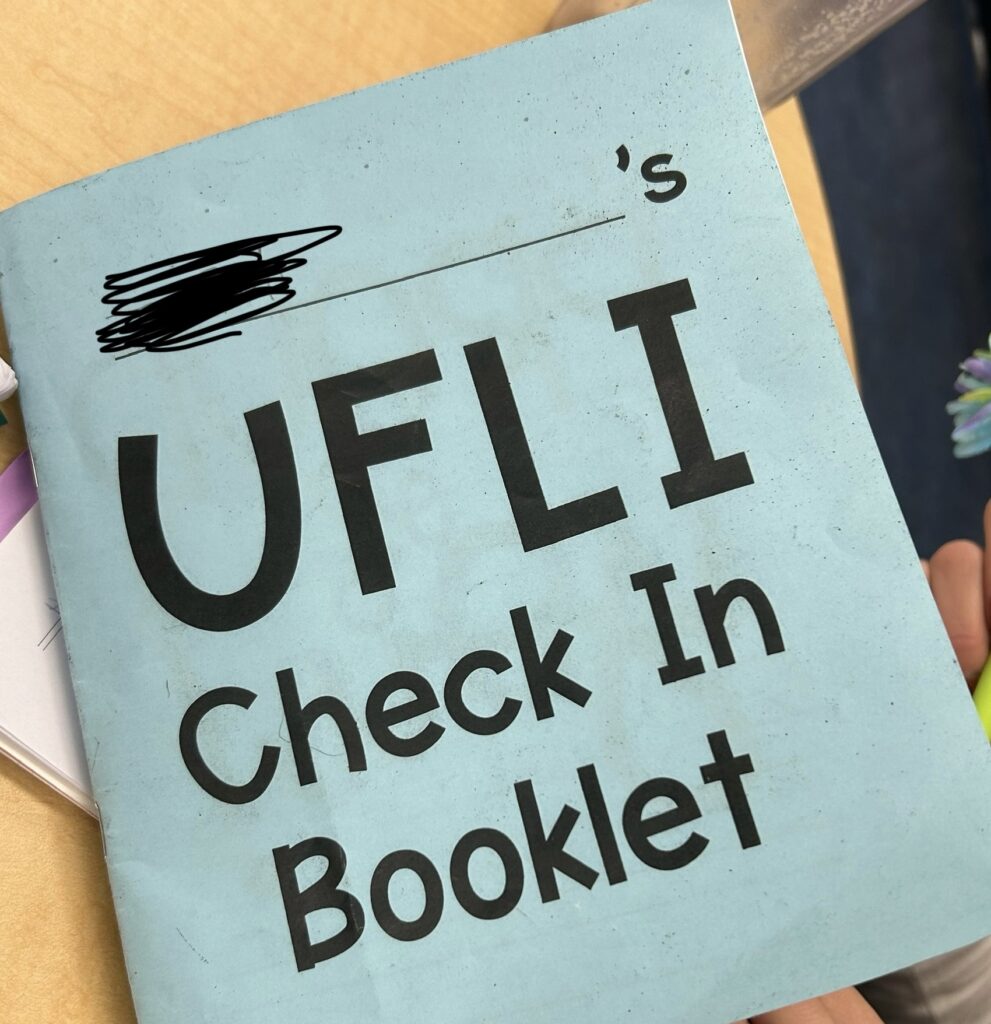
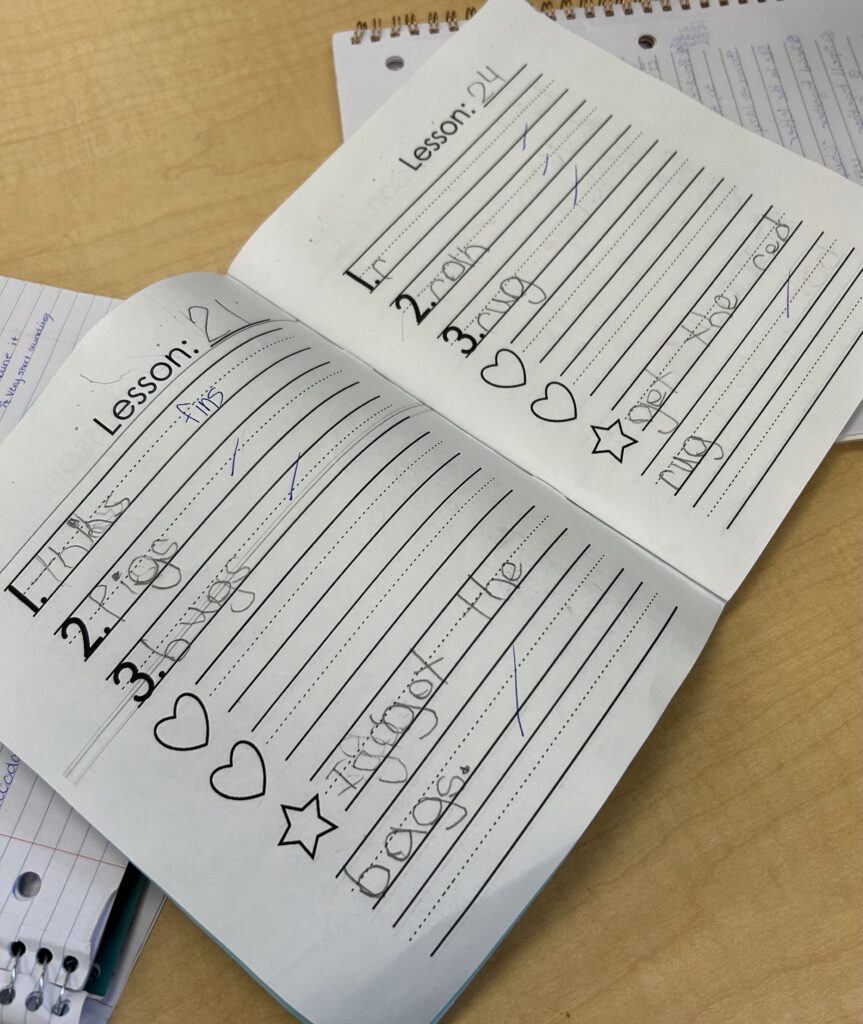

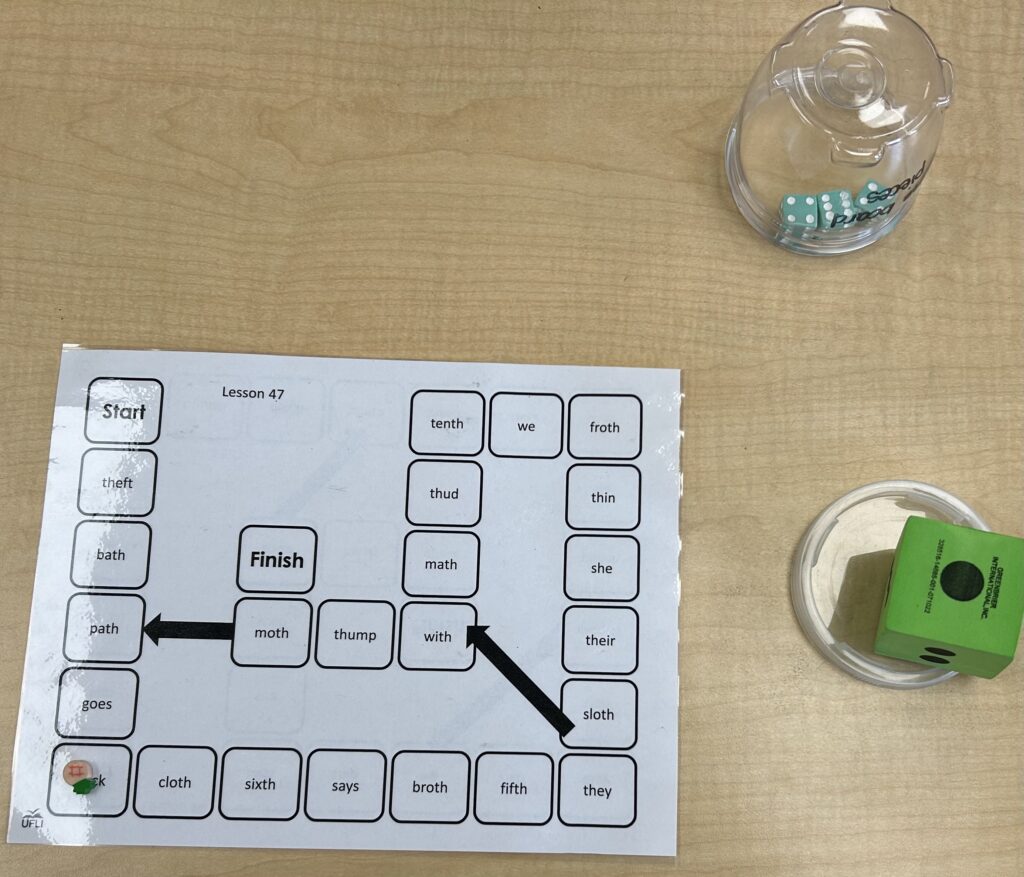
*This game is also part of the UFLI lesson – each lesson has a set of games that correspond with the lesson.*
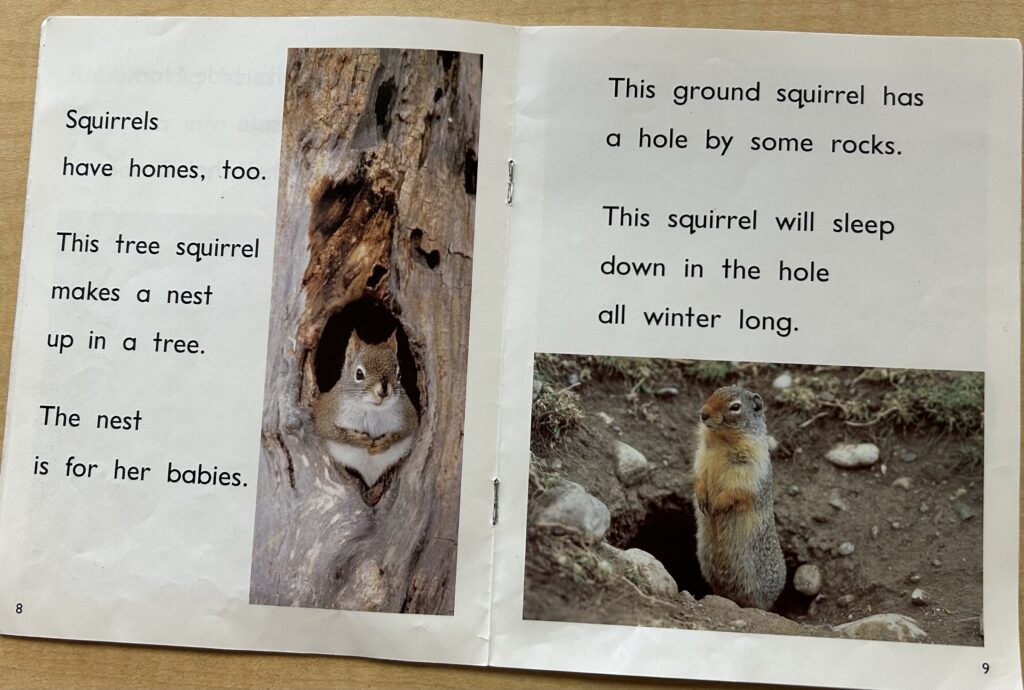
Personal Reflection
I absolutely loved my time spend in the “ ” classroom! I learnt so much from the classroom teacher as she made time to sit down with us to discuss what she was doing in detail, how it is going with the students, what is working and what is not etc. She also provided us with a lot of resources and insights on what we can look forward to and what is working for her that she recommends we try out in our future classrooms! Being able to participate and walk around while an actual lesson is taking place was extremely beneficial as I got to see in real time how to do activities / lessons like the ones explained above and how the students respond to said lessons. Additionally, watching these activities showed me the importance of having students move a lot during a lesson, having different elements to keep them engaged as well as letting the students do the learning by constantly talking not just the teacher talking. All in all I am very thankful that I got to observe the “ ” classroom and am excited to see different literacy lessons take place in the following classrooms.
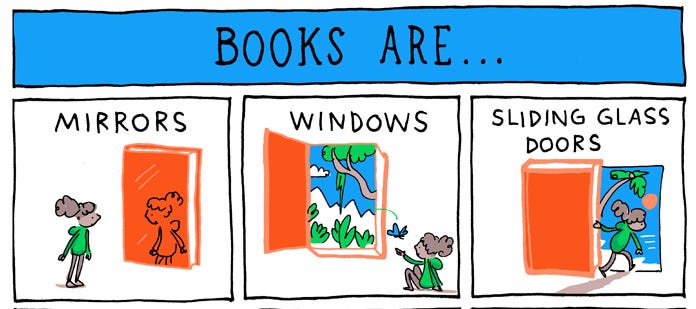
Today when I reheard Rudine Sims Bishop’s phrase “mirrors, windows, and sliding glass doors” it sparked more meaning and understanding as a future teacher in comparison to when I was not. As I am becoming a future teacher of children, I want to always remember this phrase as it holds so much importance and even more so when the actions of the phrase are applied in the classroom.
Bringing books into the classroom that allow every student to see themselves brings exclusivity as it allows every student to be seen, both physically and through literature. For some it may not matter but to others it could mean the world, everyone deserves to be seen, even in literature.
Additionally, while it is important every student is to be seen through literature it is equally important to be bringing in a diverse range of books for the “windows” it allows students to look through. Meaning that when students get the opportunity to read about different cultures, ages, genders etc, it allows them to see and learn about other people’s lives and what their lives entail. Having this exposure for students can help them build empathy, understanding, kindness and a greater understanding of the similarities and differences of people’s lives.
Lastly, I love the “sliding glass doors” part of Rudine’s phrase as it makes me think that individuals and students can physically slide the door open and step onto the other side of the door (literature). To me, literature allows the reader to find themselves being put into the individual’s shoes and experiencing their life through reading/listing; it is so powerful and for students it can be a great learning experience.
Literature is so powerful and when we use it to educate or allow others to be seen, it makes it that much more powerful and special.
Linking it to the BC Curriculum:
Rudine Sims Bishop’s phrase got me thinking of some of the big ideas in the BC Curriculum under English Language Arts. Two of the ones that connect to diversity and different cultures are, “stories and other texts connect us to ourselves, our families, and our communities” and “through listening and speaking, we connect with others and share our world” (throughout the grades, the big ideas wording slightly changes but they all have the same meaning.) I believe following these big ideas and applying them to units will allow students to learn about others and their cultures, and gain an understanding that we are all the same and we are all connected. Jo Chrona stated in her First Peoples Principles of Learning wordpress that Indigenous peoples in Canada, believe that “human beings, we are all interconnected and what affects one person affects others as well” and I think that is such a great statement when it comes to how we treat others, and learning about diversity and different cultures.
This phrase also connects with the BC Curriculum core competency “Social Awareness and Responsibility” – because as educators it is important to teach and allow students to learn this competency as it will allow them to have empathy for others and support others, their communities and the environment. The more we expose them to the real world and all the lovely diversity it has, the more we can work towards a world full of connectedness, love and collaboration.
References:
Jo. (2019, August 8). First peoples principles of learning. First Peoples Principles of Learning. https://firstpeoplesprinciplesoflearning.wordpress.com/
Curriculum. (n.d.). https://curriculum.gov.bc.ca/
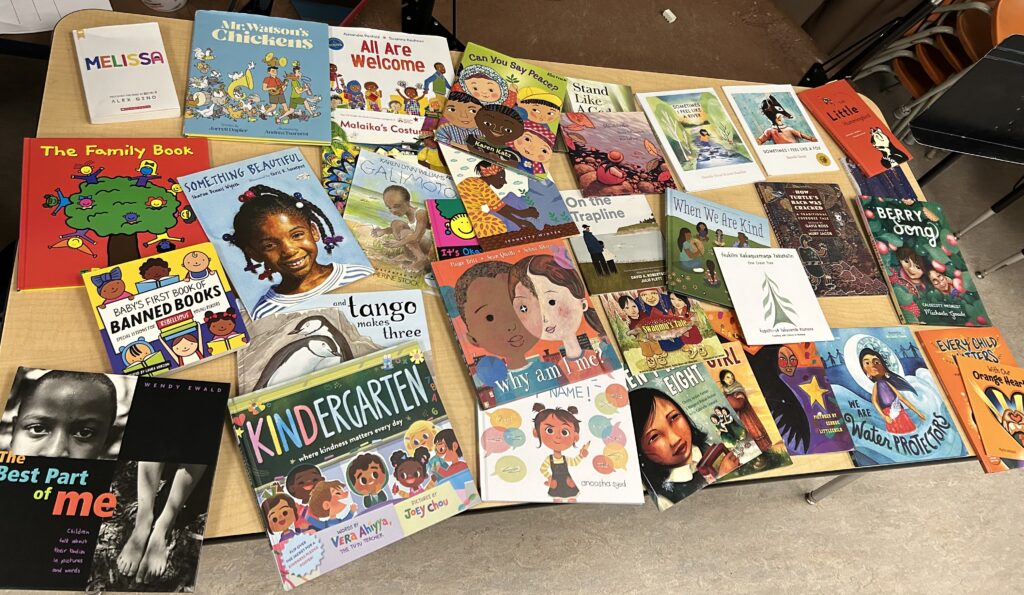
^ These are some great book examples that you could bring into the classroom to teach students about different cultures and allow ALL students to see themselves through literature!